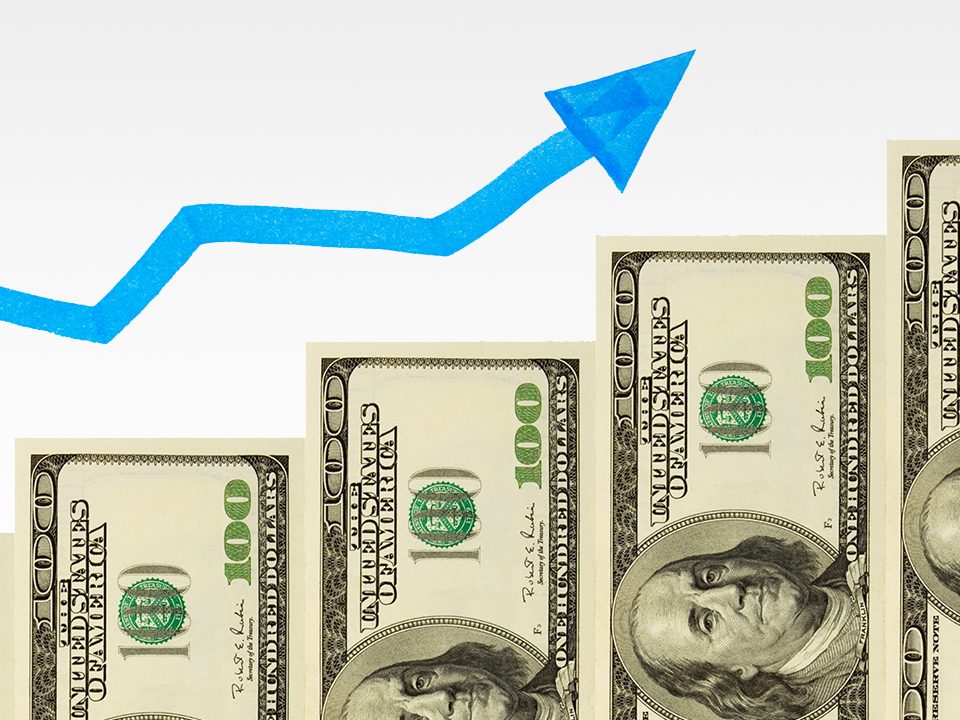Shopping for a mortgage rate can save you hundreds, even thousands, of dollars. Mortgage rates can vary in more ways than one depending on the lender. Forbes Magazine reported that according to Freddie Mac’s data, “in a single week borrowers received rates anywhere from 4.2% to 4.8%. Rate shopping is especially important in today’s market, as home prices continue to rise.” Learn how to shop for mortgage rates so you can enter home ownership with confidence in your current and future financial health.
Shopping for mortgage rates isn’t the most fun thing to do, but it’s necessary if you want you get the most bang for your buck. Getting rates from multiple lenders could give you a better interest rate and help you save money in the long term.
Back to basics
First, let’s go back to the basics. What is a mortgage? Defined by Investopedia, a mortgage is a debt instrument, secured by the collateral of specified real estate property, that the borrower is obliged to pay back with a predetermined set of payments.
Now, what are the different types of mortgages? There are many, but Dough Roller narrowed them down to a list of the most common options, which are:
- Fixed Rate Mortgage – this is the most popular option. With this, you have predictable monthly payments spread out over a predetermined amount of time (30 years, 20 years, 15 years).
- Adjustable Rate Mortgage (ARM) – with this option, the interest rate can fluctuate.
- Balloon Mortgage – this option has a shorter term, averaging around 10 years, and starts with low payments, but at the end of the therm the full balance is due immediately.
- Interest-Only Mortgage – this mortgage gives borrowers an option to pay a much lower monthly payment for a certain time, after which they’ll start on the principal.
- Reverse Mortgage – this gives homeowners access to their home’s equity in a loan that can be withdrawn in a lump sum with set monthly payments.
- Combination Mortgage – this is helpful if you need to avoid Private Mortgage Insurance because you can’t put 20% down on a home.
- Government-Backed Mortgage – the federal government offers some loans that are backed by government entities to encourage homeownership.
- Second Mortgage – also known as a home equity loan, this is when you have a home and have some equity built up in it.
Your options
There are a lot of mortgage options out there, so how do you know which one is best for you? It can be a difficult decision that involves more than just who has the lowest interest rate. Other important things to consider are how long you’ll be living in this home and what kind of loan you think you need. Before you talk to lenders, make sure you understand your financial situation and what type of loan you want and can handle. If you understand your needs as a borrower, you’ll be able to better convey to the lender what you’re wanting out of your mortgage. Once you know where you stand financially and have an idea of what you want your mortgage to look like, start shopping for lenders.
You might be a little confused when trying to determine what loan is best for you. Lending Studios is here to walk with you every step of the way. Let us discuss with you what loan is the best for your individual needs.
Getting started
You could be asking yourself, “when is it time to shop for a mortgage?” Though there’s no wrong time to shop for a mortgage, it’s important to think about your credit score and the affects that shopping might have on it.
According to U.S. News & World Report, each time you apply for a mortgage it will be marked as a credit inquiry on your credit history. Due to the fact that inquiries signal you’re looking at taking on new debt, your credit could take a hit, however it’s usually not too significant. They suggest shopping within a 45 day window. When lenders use a newer FICO scoring model, you as the consumer will have 45 days to shop for mortgages without having your credit downslide. If your lender is using an older FICO model, you could only have two weeks (14 days). It’s because of this that you’re advised to make a mortgage lending decision within that smaller timeframe.
When you’re ready to begin shopping for a mortgage, it’s encouraged that you look at multiple lenders of all sorts:
- Online lenders
- Credit unions
- Large banks
- Regional/local banks
- Mortgage brokers
By looking at a variety of lenders, you’ll be able to compare chargers easier and see what kind of customer service you’d receive from each of them. Bad customer service seems like something you can put up with. However, when dealing with your money and home you should receive the best service out there.
How to shop for a mortgage
To shop for a mortgage, you have to get pre-approved with each lender. This ensures you’re getting a solid offer, rather than an estimate. When you apply for a mortgage, each lender will look at your financial sitting. They’ll go into detail and see your income, finances, employment, and credit to determine how much they’ll let you borrow and what qualifying interest rate you’ll receive. To ensure you’re working fast to stay in your allotted timeframe, it’s best to go into shopping for a mortgage with a plan.
By looking at multiple mortgage lenders, you’ll get a better idea about what each charge in fees,. You’ll also learn about insurance premiums and more. Additionally, you’ll be able to learn their timelines and know how long it would take them to close a loan. This also gives you the chance to see how they work with their borrowers.
Another area to look into is the points. In the mortgage realm, points are fees you pay upfront to lower your interest payments over the timespan of your loan. If you plan to stay in your home for many years, incorporating points up front could be a smart option a it would lower the overall payments throughout the loan’s duration.
Credit Karma provides this example:
“For example, if you took out a 30-year mortgage for $100,000 at 5 percent interest with no points, your mortgage payment would be $537 each month. Paying for points might allow you to lower that 5 percent interest rate.
Hypothetically, let’s say you paid $2,000 for two points and decreased your interest rate from 5 percent to 4.5 percent (actual decrease can vary). With a 4.5 percent interest rate, your monthly mortgage payments would decrease to $507. It would take you 67 months to make up the $2,000 difference, so you would have to stay in your home for nearly six years to make it worth your while.”
If you take the time to look into all your options, you’ll be sure you’re choosing the best mortgage for you. By going into talks with lenders educated and prepared, you’ll be able to better negotiate to get your needs met.
It’s important to remember that you have a voice. If you’re shopping mortgage rates around and notice that a lender is charging hire fees than their competitors, ask them to clarify why that is and see if they’re willing to negotiate it down with you.




